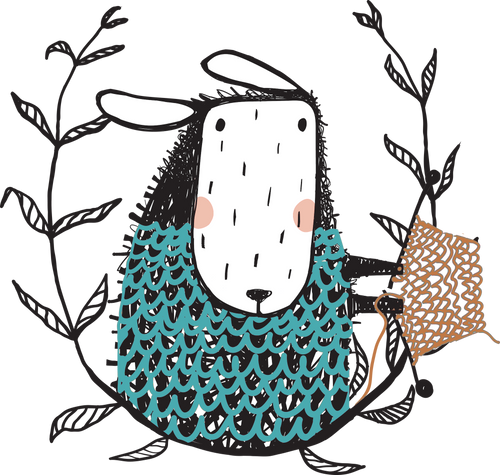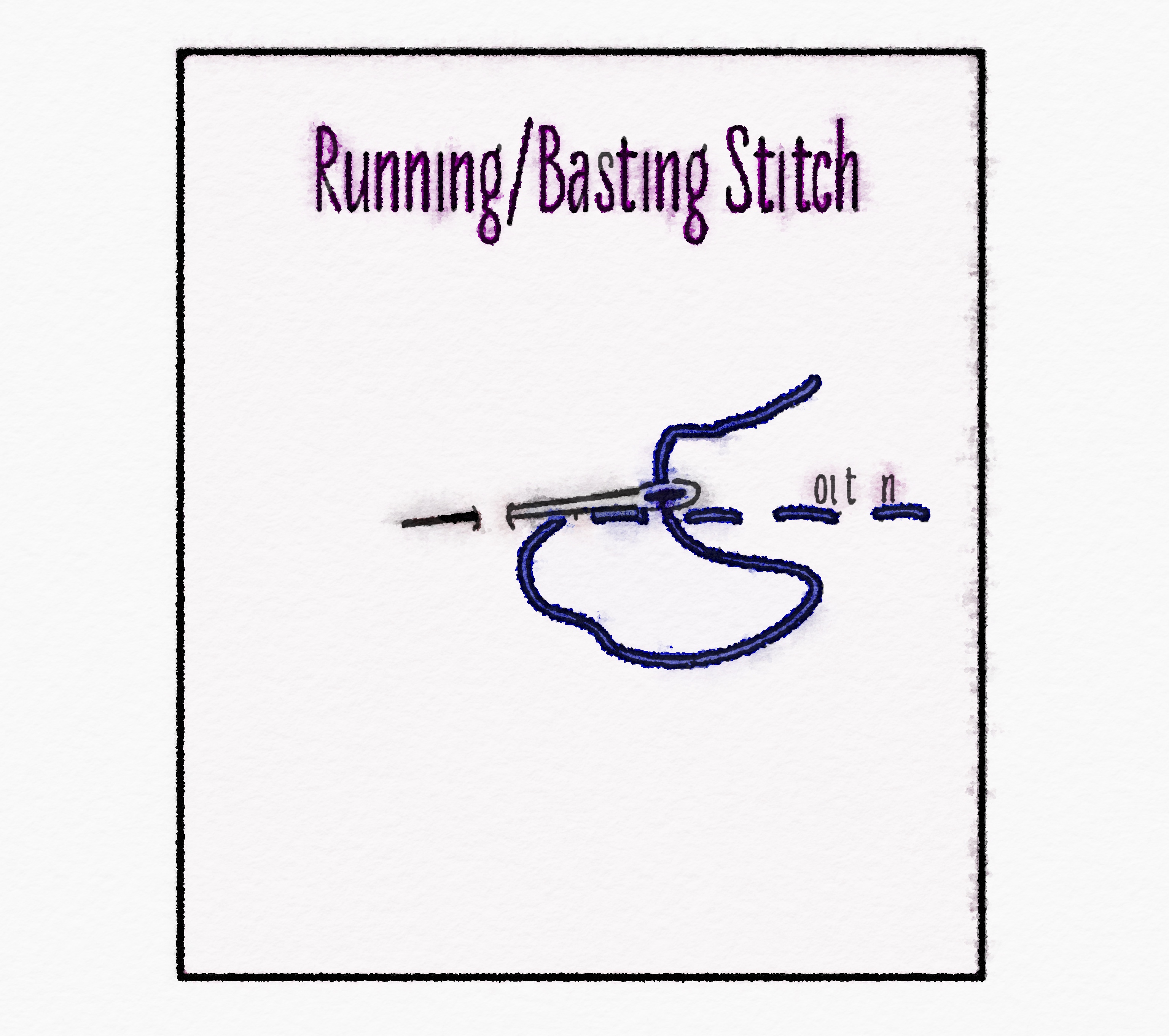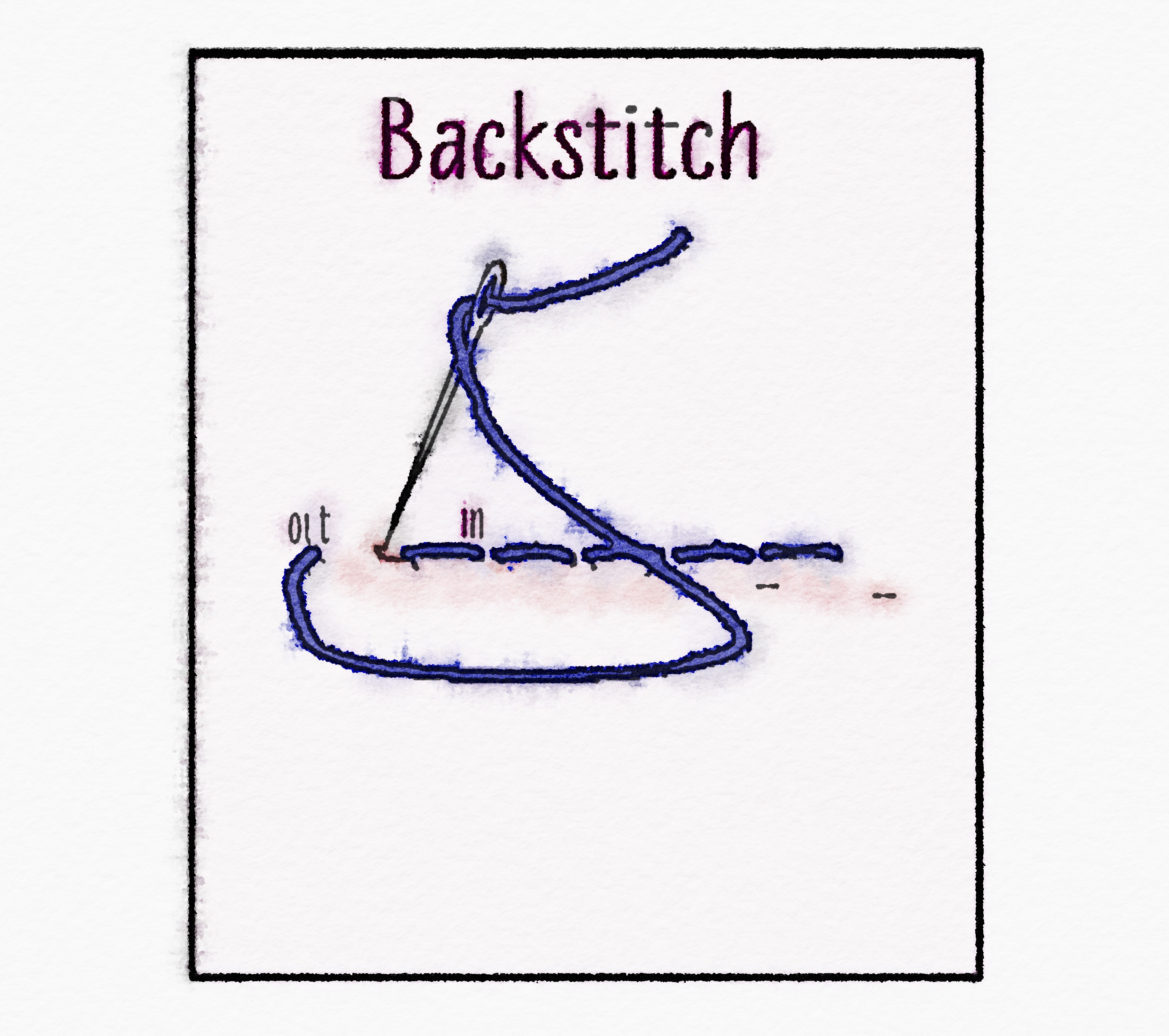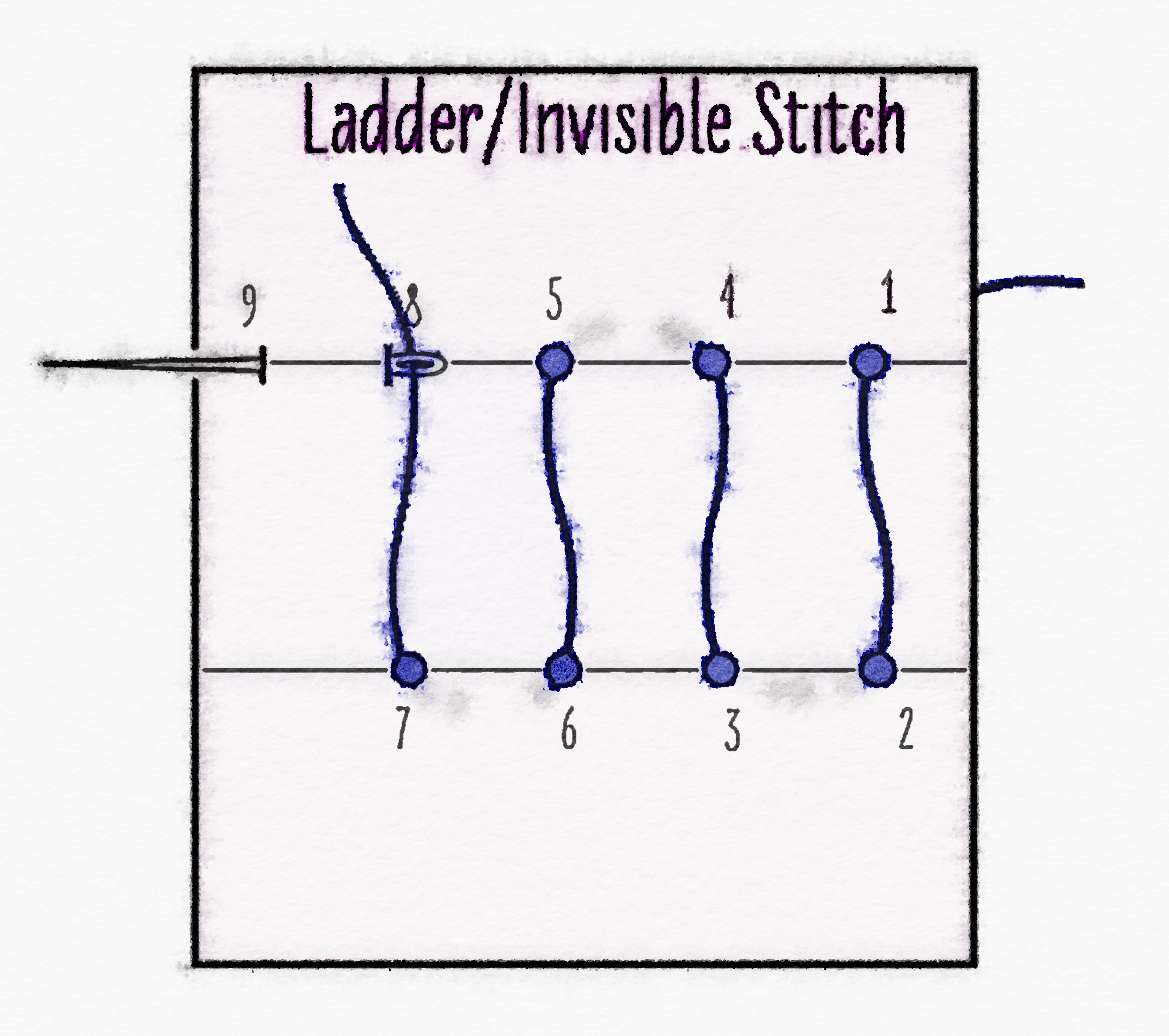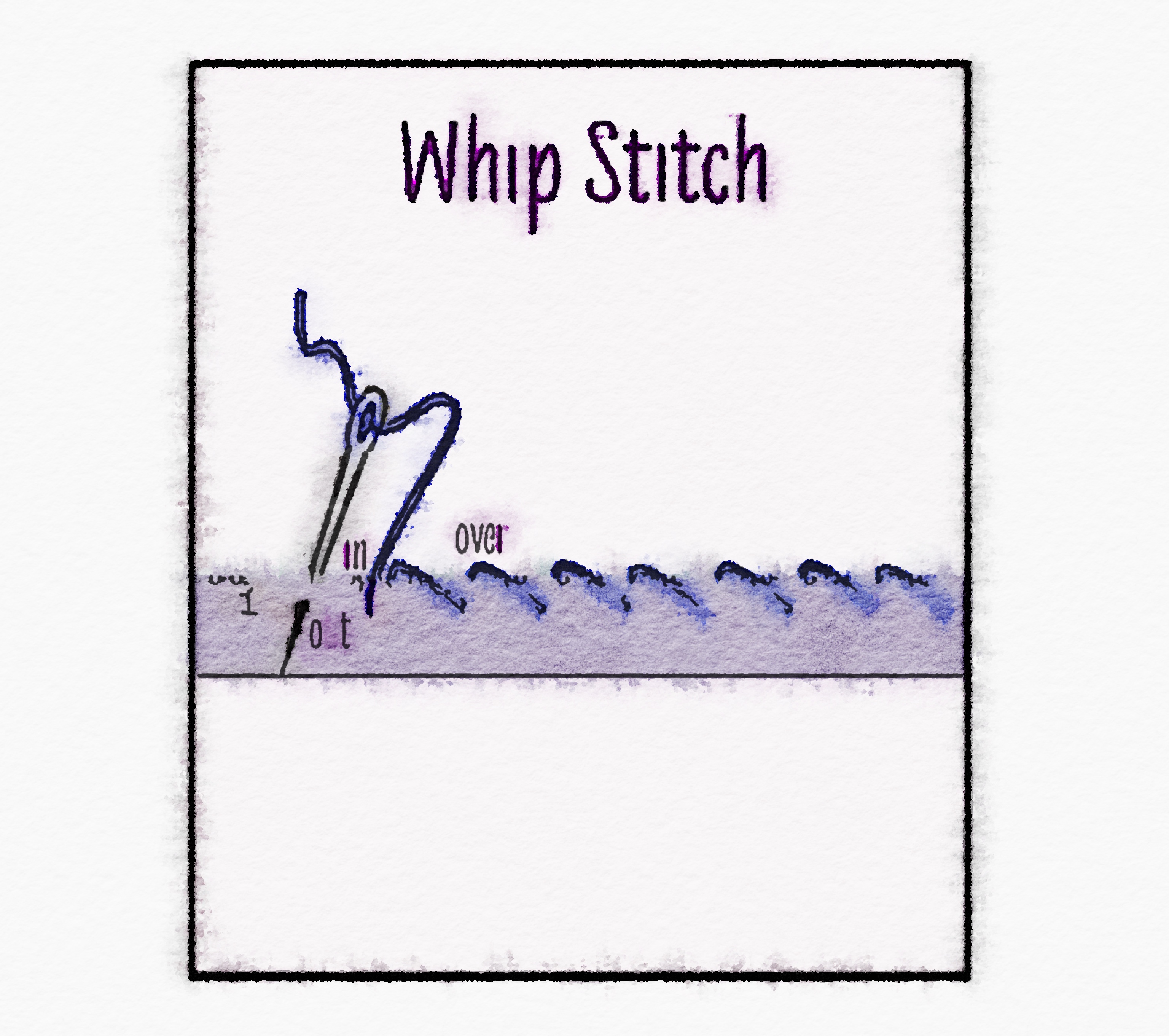Sewing Stitches you will need
Doll making – Stitches – Basting/Running-stitch
The basting/running stitch is used on every seam that was initially pinned. Before sewing the seam permanently, I like to use the running stitch. You will use it on the back of the head, on hands and feet and along the seams on arms and legs. The running stitch is also used to gather fabric, which we will do around the waist, wrists and ankles.
Doll making – Stitches – Back-stitch
The backstitch is used to sew all seams, this happens after the basting/running stitch. We will use it to permanently sew the seams. You will use it on the back of the head, on hands and feet and along the seams on arms and legs.
Doll making – Stitches – Ladder/Invisible-stitch
The ladder/invisible stitch I find the most important stitch in doll making. We will use it on every seam that we have to close from the “outside”. The top of the head, around the neck, the waist, wrists and feet.
The whip stitch is simply taking the needle over, in and out.
The whipstitch is used to tack down the fabric. We will use it on the spine of the doll to prevent fabric from rolling up toward the neck.
Doll making – Stitches – Cross-stitch in place (no matching picture)
The cross stitch in place is used only to secure the eye-string.
The Double Wrap knot
We use the double wrap knot to secure the eye-string and the tie around the neck.
Sewing machine stitch
Use the stretch stitch which looks like a lightning bolt on the sewing machine.
If you don’t have a stretch stitch use a narrow set zig-zag
Note: Use scrap fabric to set correct tension
